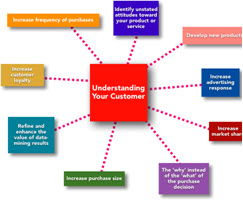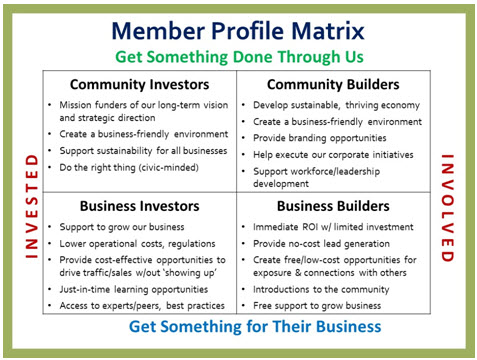Most likely, you’re tracking demographics about your members.
If you’re not using psychographics, you really don’t know why members join and why they stay, or not. Knowing more about the “why” than the “what” could also help you attract new members and increase revenue.
Most associations collect basic information from prospects when they fill out the application to join. Aside from the basic “fields” like Company Name, Primary Contact Name, Company address, etc., the application may ask for the contact’s Position, Number of Full-Time Employees (FTE), Industry or NAISC code, Number of Offices/Locations, and other requested information. This information is then uploaded into the Association Management System (AMS) and used to set up the member account, list the member in the Directory, and for other internal functions.
The majority of the information collected from new members are geographic and demographic. If the new member is also asked to indicate the reason for joining, then a psychographic variable is also collected. In other words, geographic data explains where your member is; demographics explain who your member is, and psychographics explains what’s important to them.

When I’ve taught the Marketing Strategies course for the Institute of Organization Management (IOM), I ask students to work in small groups to develop a mini marketing plan for a specific program (e.g., Leadership, Young Professionals). One of the activities is to create 2-3 Target Profiles that include demographics and psychographics. Once the Target Profiles are developed, the groups create Targeted Messages that resonate with different audiences to sell the program. A “one size fits all” marketing strategy doesn’t result in high email open rates or registrations.
Even though I have taught this course for more than 14 years, I find that association professionals struggle with profiling the members they have. Identifying demographics is fairly easy if the information has been collected or is readily available but knowing what certain members value and why is a real puzzler. Is it because we don’t really understand our customers or target markets, or are we lacking the data that would provide the “business intelligence” we could use to develop marketing messages for members?
Demographics Give Us Much of the “What”
It’s easy to buy lists that contain demographic information such as age, gender, ethnicity, income, geographic location, as well as other types of information about where customers live and what they do for a living. This type of information can be found through a variety of sources like the American Fact Finder that is offered through the Census Bureau, for example. You can learn a lot about people, and even your neighbors, just by entering your zip code in Claritas PRIZM. (I found it interesting to learn that I live in a neighborhood where many residents do not have kids at home!)
The Census Bureau conducts surveys every five years to collect business demographics by zip codes. The last was conducted in 2017. Reviewing the Census Bureau Economic Census, you learn how many businesses are in your area by industry, number of employees and more. This is a great way to compare the Census results with your membership base to see how representative it is to the market or to consider possible target markets due to underserved areas in your base.
Although demographic data like the Census will help you know more about the types of businesses in the areas, it will not reveal what influences the business leaders to join or renew.
The Secret of Joining and Renewing Lies in the “Why”
Psychographics can tell you much more about your members and help you to market to prospects that have things in common. Many businesses use psychographic data to market to consumers based on information about the type of music they like, what car they drive or other brands they buy, how much they spend on entertainment, and where they shop. Services like Claritas PRIZM or Axiom can provide both demographic and psychographic information to help you better understand specific groups of people.
Psychographics can tell you a lot about why prospects join and why members renew each year based on the types of benefits they prefer, what types of committees they engage in, and which links they click on in emails. Psychographics help you to understand what they value and what influences their decisions.

A Member Profile Matrix can help you to distinguish between different types of members and what they value. The sample Matrix does not include demographic variables, although Community Investors and Community Builders tend to be larger enterprises while Business Investors and Business Builders are smaller.
You could create your own Matrix based on segments in your membership base and what they appear to have in common such as pain points, interests and their motivation to be members. Both demographic and psychographic variables should be used to create a sense to describe each segment.
By understanding who you serve, why they are members and what matters most to them, you will be able to develop messaging that resonates with each segment and communicate more effectively.
Here are some ways you can learn more about your members to help create your customized Matrix:
- Ask survey questions that collect demographic information as well as psychographic info (e.g., why they are members, which programs they value most), then filter results and use cross tabs to analyze.
- Identify benefits used by members and maintain that info with their account profiles.
- Track which links members click on in emails and newsletters using a software that attaches “tags” that can be added to member profiles to help you to identify their interests and learn which opportunities matter more to them. The more you know, the better you can meet their needs!
Cathi Hight helps organizations manage constant change, develop customer-centricity and “work smarter, not harder”. She is President of Hight Performance Group and the developer of The Member Retention Kit, A New Approach to Tiered Membership and Work Smarter, Not Harder. Learn more at www.hightperformance.com.


